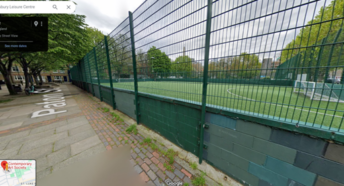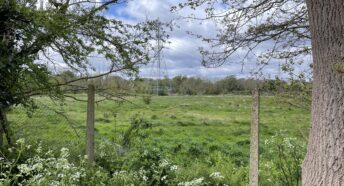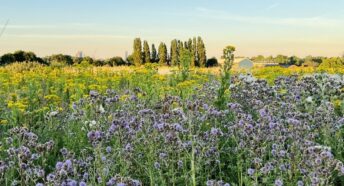Meet the local campaigners: Anna-Maria in Lewisham
In this series, we profile the London residents we’re supporting as they advocate to save their local parks and green spaces.
Often it’s the efforts of just one or two local campaigners which ensures our parks and green spaces remain available for the public. In the first in this series, we talk to one Londoner working to save ancient woodland in Lewisham.
Anna-Maria Cahalane-MacGuinness is leading the campaign to save Gorne Wood in Crofton Park, Lewisham, which is designated Ancient Woodland but currently threatened with development. Part of Gorne Wood was a community green space for a hundred years and primarily used by children for environmental education. It was known as the Dandy Park in reference to the first community group that used it – a local scout troop. But in recent years the woods were sold into private ownership, local people were shut out, and the site is now being damaged and degraded. There is a risk it will be lost forever.
Anna-Maria at the Fourth Reserve charity is campaigning to turn the fenced off site into a new accessible park. This is one of the local Ten New Parks for London campaigns CPRE London is supporting. Find out more about Anna-Maria’s work at the Fourth Reserve. Contact fourth.reserve@yahoo.com to ask to be updated with news on this campaign. Follow @FourthReserve on Twitter and @4thReserve on Instagram.
In the meantime, here’s more about Anna-Maria!

Tell us a bit about yourself! I live in Lewisham with my husband, two daughters aged 10 and 15, mum aged 92 and basset hound Poppy. I am a tutor to children with Special Educational Needs and I work on different projects that support community development. I’m currently helping set up IT drop-in sessions for the digitally excluded. I’m also an artist and draw portraits and wildlife.
What got you involved in working to save your local park/green space? I was really concerned that in a short space of time a well-looked-after green space, alive with wildlife, became locked and used as a waste ground for fly tipping with no consultation with a community that has enjoyed it for decades.
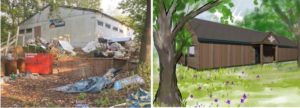
What’s the most challenging thing about your local advocacy work? The huge amount of time involved in trying to save something so important and the sheer lack of resources available to do it.
What do you most enjoy about it? I love learning about wildlife, conservation, local history and planning – it has been enormously educational. I’ve also met some incredible people who work tirelessly for no financial gain.
What keeps you going when your campaign is hitting obstacles? Seeing something wonderful such as a nesting sparrow hawk or hearing the owl call at night. The wildlife have no voice and they need us.
How has CPRE London made a difference to you and your campaign? Just having a respected charity as a supporter makes a big difference – in all briefings, letters etc… I always say ‘Supported by CPRE London’. It gives strength to our cause.
What one piece of advice would you give to anyone else embarking on this journey? Look at your campaign from as many perspectives as possible in order to grow support – what is important to you may not be important to someone else. Bring your community with you on the journey.
Anna-Maria and the Fourth Reserve have created a vision for the site summarised in these images:
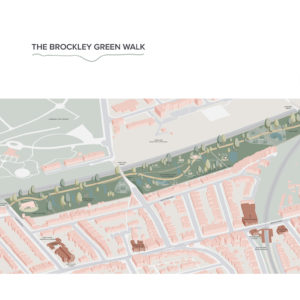
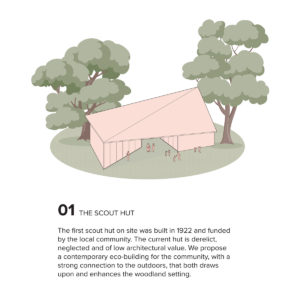
THE SCOUT HUT
The first scout hut on site was built in 1922 and funded by the local community. The current hut is derelict, neglected and of low architectural value. We propose a contemporary eco-building for the community, with a s strong connection to the outdoors that both draws upon and enhances the woodland setting.
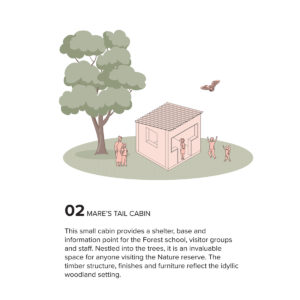
02 MARE’S TAIL CABIN
This small cabin provides a shelter, based and information point for the forest school, visitor groups and staff. Nestled into the trees it is an invaluable space for anyone visiting the nature reserve. The timber structure finishes and furniture reflect the idyllic woodland setting.
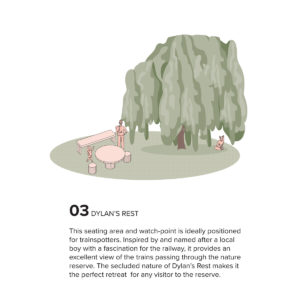
03 DYLANS REST
This seating area and watch-point is ideally positioned for trainspotters. Inspired by and named after a local boy with a fascination for the railway, it provides an excellent view of the trains passing through the nature reserve. The secluded nature of Dylan’s Rest makes it the perfect retreat for any visitor to the reserve.
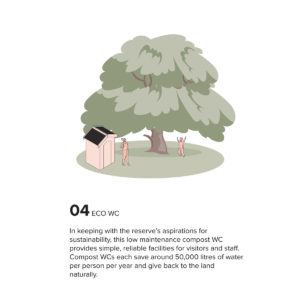
04 ECO WC
In keeping with the reserve’s aspirations for sustainability, this low maintenance compost WC provides simple, reliable facilities for visitors and staff. Compost WCs, each save around 50,000 litres of water per person per year and give back to the land naturally.
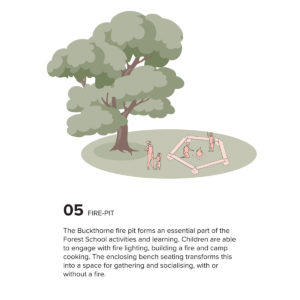
05 FIRE PIT
The Buckthorne fire pt forms an essential part of the forest school activities and learning. Children are able to engage with fire lighting, building a fire and camp cooking. The enclosing bench seating transforms this into a space for gathering and socialising, with or without a fire.
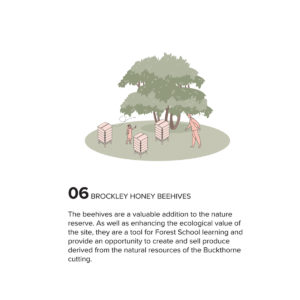
06 BROCKLEY HONEY BEEHIVES
The beehives are a valuable addition to the nature reserve. As well as enhancing the ecological value of the site, they are a tool for forest school learning and provide an opportunity to create and sell produce derived from the natural resources of the Buckthorne cutting.
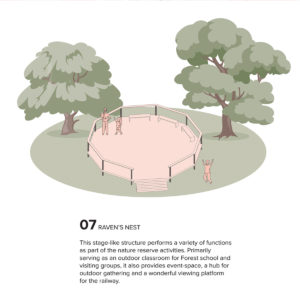
07 RAVEN’S NEST
This stage like structure performs a variety of functions as part of the nature reserve activities. Primarily serving as an outdoor classroom for forest school and visiting groups, it also provides event space, a hub for outdoor gatherings and a wonderful viewing platform for the railway.
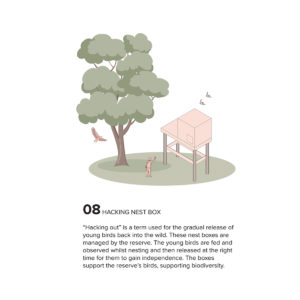
08 HACKING NEST BOX
“Hacking out” is a term used for the gradual release of young birds back into the wild. These next boxes are managed by the reserve. The young birds are fed and observed whilst nesting and then released at the right time for them to gain independence. The boxes support the reserve’s birds, supporting biodiversity.





